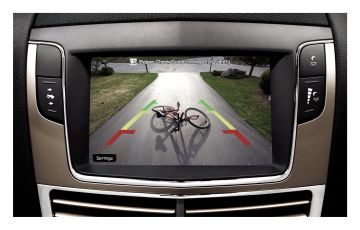
With or without eyes in the back of their heads, drivers keep hitting things.
Despite the growing prevalence of back-up cameras, federal data shows that this technology hasn’t significantly cut down on cars backing into people and causing them harm.
That research on so-called “back-over incidents” comes as the National Highway Traffic Safety Administration moves to make back-up cameras standard and presses automakers to add a bevy of new technologies — from automatic braking to lane collision warnings — to even entry-level cars to reduce accidents on the road.
Back-up cameras have been around longer than other car safety tech, so the federal government has years of data on their impact.
Between 2008 and 2011 — the most recent years for which data was made available by NHTSA — back-up cameras more than doubled from 32 percent to 68 percent of all new cars sold. But injuries fell less than 8 percent, from about 13,000 down to 12,000. The improvement in safety has been very gradual from year to year.
The fatality rate has improved somewhat, dropping 31 percent over the same time period. But the sample size here is small — deaths from cars moving in reverse are relatively rare. NHTSA’s research shows deaths declined from 274 to 189 between 2008 and 2011, and the number was volatile year to year.
Indeed, NHTSA will mandate back-up cameras in all passenger vehicles by 2018, a move it estimates will save between 58 and 69 lives each year once every car on the road has one. And that process could take a while.
As car companies and even regulators increasingly lean on technology to make roads safer, the tepid success of the back-up camera is a red flag. Sure, drivers can see more of what’s behind them — the cameras reduce blind zones while in reverse by 90 percent, according to a study by the Insurance Institute for Highway Safety — but they keep hitting things. And with a camera, they might even see themselves do it.
“Deaths from back-over crashes thankfully are pretty rare, but they still are tragic,” said Jessica Cicchino, vice president of research at the Insurance Institute for Highway Safety. “We know that rear cameras can help, but they’re not a silver bullet.”
Even with back-up cameras, drivers still don’t look around their vehicles enough when in reverse and sometimes get distracted by any number of things as their cars roll backward, says Janette Fennell, president and founder of car safety nonprofit KidsAndCars.org.
Back-up cameras also often beam images to display screens in the front of the car, and drivers can become too reliant on them. Instead of looking backward and through their rearview window or checking mirrors, their eyes are glued to a screen.
Read more of the original article in The Washington Post.




